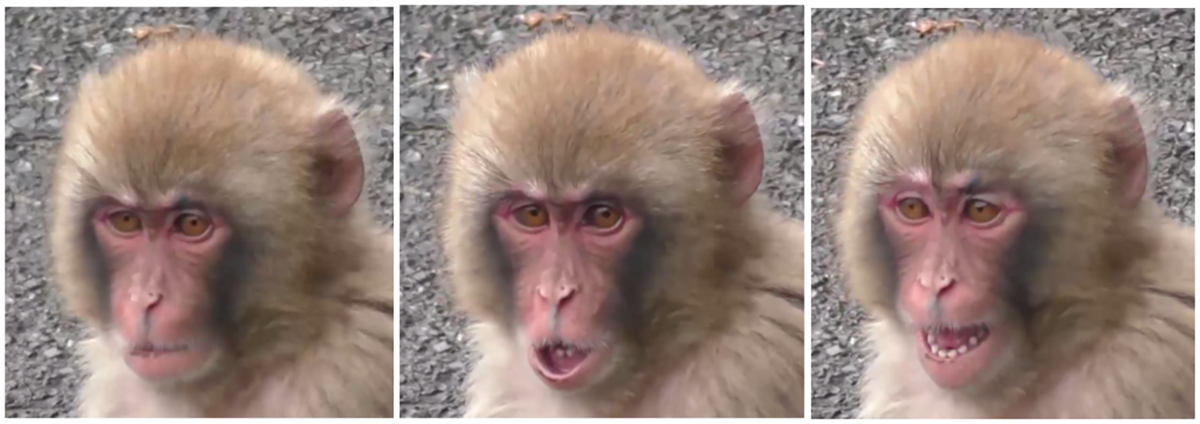Facial expressions are central for communication and emotional expression in humans and other primates. However, facial expressions are also short and very subtle behaviours, typically with different meanings depending on the species, which makes them difficult to study.
The current gold standard method to investigate facial expressions in humans [1] and other species (e.g., orangutans: [2], Japanese macaques: [3], common marmosets: [4]) is an observational tool called Facial Action Coding System (FACS). This tool measures facial movement in an anatomical and objective way, by accounting for muscle contraction and detecting observable changes on the face of individuals. Each muscle contraction is coded as a subunit of a facial expression, which are designated as Action Units.
Here at the University of Leipzig, we are developing two new FACS systems: 1) The GorillaFACS for gorillas (Gorilla spp), and 2) The BonoboFACS for the bonobos (Pan paniscus). Once these tools are developed, they will be made freely available online at www.AnimalFACS.com platform (together with previously published FACS for other species). The AnimalFACS are available for anyone wishing to get trained and certified in using these tools, including researchers, veterinarians, animal carers, students, and any other person interested in the behaviour of a particular species covered.
In addition, we will apply these new tools together with other FACS previously developed for other primates to investigate how facial expressions develop in infancy.
Understanding primate communication and emotion has direct applications for each species management and welfare, as facial expressions are good indicators of welfare status in individuals [6]. The AnimalFACS also help us better understand the evolutionary processes of communication and emotion in humans and other animals by allowing comparison of facial expressions in different species, based on their facial anatomy. In particular, we will be able to better understand how facial expressions form in our closest primate relatives, which will shed light about our own ways of communication.
Publications
- Facial action coding system (FACS): manual
Ekman P; Friesen WV, Hager JC
Salt Lake City: Reseach Nexus. 2002. - OrangFACS: A Muscle-Based Facial Movement Coding System for Orangutans (Pongo spp.)
Caeiro CC, Waller BM, Zimmermann E, Burrows AM, Davila-Ross M
International Journal of Primatology. 2013 Feb;34:115-129.
DOI: 10.1007/s10764-012-9652-x - Extending the MaqFACS to measure facial movement in Japanese macaques (Macaca fuscata) reveals a wide repertoire potential
Correia-Caeiro C, Holmes K, Miyabe-Nishiwaki T
PLoS ONE. 2021 Jan;16(1):e0245117.
DOI: 10.1371/journal.pone.0245117 - CalliFACS: The common marmoset Facial Action Coding System
Correia-Caeiro C, Burrows A, Wilson DA, Abdelrahman A, Miyabe-Nishiwaki T
PLoS ONE. 2022 May;17(5):e0266442.
DOI: 10.1371/journal.pone.0266442

